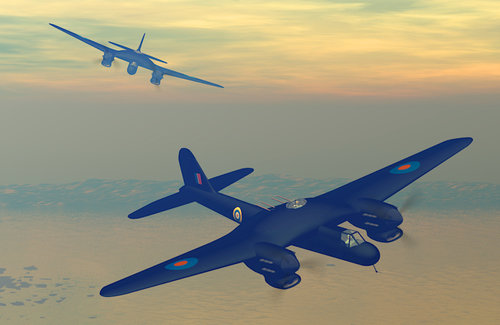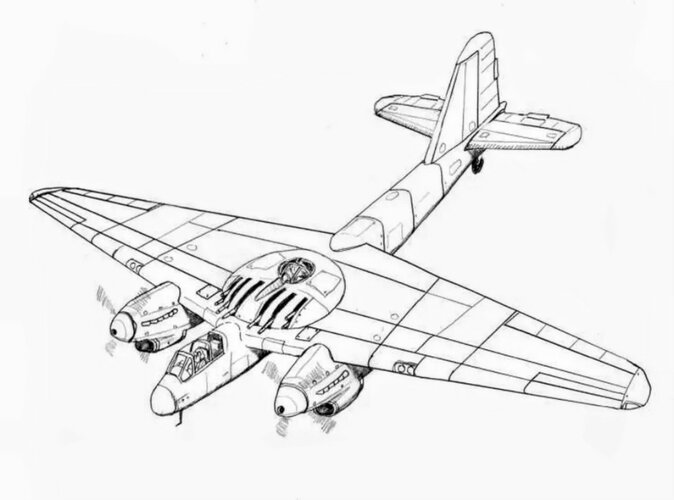nuuumannn: So F.18/40 was issued in October 1940. Any idea when the two
Beaufighter Mk.V production-line conversions were completed at Filton? I wish I knew the date of that A&AEE test pilot quote (I find dates - or lack thereof - for the
Beaufighter Mk.V quite confusing). Rather unhelpfully, the Imperial War Museum gives "1939-1945" as dates for that well-known photo (IWM MH 4563) of R2274 under test at Boscombe Down.
According to Alec Brew (page 105,
The Turret Fighters: Defiant and Roc, Crowood Press, 2002), "Both Beaufighters were sent for trial with No. 406 Squadron at Acklington, and later by the RAF's premier night-fighter squadron, No. 29." But there's a timing problem. If his logs were accurate, No.406's CO, W/Cdr Doug Morris, DFC, [1] was flying one of the turret
Beaus on 04 Sept 1941 - months after Brew says both machines were with No.29 Sqn. But which version is correct?
Simon Parry (page 14,
Beaufighter: In Focus, Air Research Publications, 1999) says that
only R2274 went to No.406 while R2306 went to No.29 ... implying that these movements happened at or around the same time. That jives with other sources placing R2306 on operational trials with No.29 Sqn as RO-O at RAF West Malling in June/July 1941. Just to add further confusion, rafweb lists R2306 as having been with 600 Squadron AuxAF

According to '
Heros of our Time', 100 Group's 1692 Bomber Support Training Unit at RAF Great Massingham had at least one Mk.V in service at least as late as June 1944. Of course, 'Mk.VF' is a fairly common typo for 'Mk.VIF', so who knows?
If true, 1692's role was intercept radar familiarity [2] so the Mk.V may well have been turretless by that point. The aircraft involved would have been R2274 (since R2306 was said to have been destroyed in an accident back on 29 Sept 1941).
Airfield Information Name Royal Air Force Great Massingham / RAF Great Massingham Opened July 1940 Closed November 1950 Runways Originally Grass, then later 3 x Concrete

heroesofourtime.co.uk
I was surprised to see on that 04 Sept flight, W/Cdr Doug Morris was accompanied by two additional flight crew. One was his radar operator, Flt Sgt A. V. Rix, DFM, of Edinburgh. The other was a Sergeant Hardy. I'm assuming that 'Ricky' Rix, remained radar operator while the to-me mysterious Hardy was the WAG? [3] That raises the question: Was a flight crew of three stadnard for the
Beaufighter Mk.V? It makes sense since the
Defiant had showed that it wasn't feasible to put radar scopes into the Type A turret. But a crew of three also tells us that the aerodynamic drag of the turret was not the sole reason for the
Beaufighter Mk.V 's reduced performance. (BTW, many sources say that the rear 'bubble' was replaced with sheet metal. But, a flat perspex cover is apparent in some photos. That now makes more sense if there's a third crew member.)
According to Alec Brew, No.29 Sqn found the benefits and pitfalls of the
Beaufighter Mk.V to be the same as for
Defiant night fighters. "The arrangement was found to have three significant merits. First, it was easier to engage a low-moving target, which could easily be over-shot in a normal fixed-gun approach, and then lost in the darkness. Second, it enabled the crew to make the best of a bad approach, letting the gunner open fire even when it would be impossible for the pilot to place his sights on the target. Lastly, it let the Beaufighter approach from beneath the target, which was more visible from below on dark nights." (from page 105 again) The problem for both turret fighter types was insufficient speed to overtake most enemy aircraft.
riggerrob: Apparently, some
Bolingbroke IVTs had twin-gun Boulton Paul Type 'C' turrets fitted for gunnery training. Any idea if those
Bolys 'donated' some of the Bristol turrets to the
Battles?
_______________________
[1] I just noticed a typo in
RCAF Squadrons and Aircraft (Samuel Kostenuk and John Griffin, Samuel Stevens, Toronto, 1977). Wartime COs for No.406 are listed on page 91 with the CO of the time in question given as "W/C D.G.
Norris (RAF), DFC 28 May 41 - 6 Aug 42".
[2] That 'radar familiarity' may have been a euphamism. During 1943 - as No. 1692 Radio Development Flight -
Defiants and
Beaufighters had bee employed on radar jamming trials from RAF Drem.
[3] Although the Ottawa Journal of 26 May 1942 also identified Rix as "his Scottish gunner". So was Rix acting as radar operator or air gunner?
















